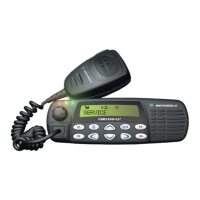14
English
INTRODUCTION
by making repeaters available to all users after
every transmission.
CONVENTIONAL RADIO SYSTEMS
Conventional radio systems typically refers to
unit-to-unit communications through a single
channel. Conventional systems also allow
radio users to extend communication coverage
by relaying their messages through a repeater.
To ensure coordinated use by multiple
talkgroups, each radio user must monitor the
channel or repeater before transmitting to
verify that the system is not currently busy.
CDM1550•LS
+
RADIO FEATURES
CDM1550•LS
+
Radio Feature Highlights:
Radio Wide Features
• 14-Character Alphanumeric Display
• 4 Programmable Feature Buttons
• Up to 15 PassPort and/or LTR Zones with
up to 16 Talkgroups per Zone
• Up to 16 Conventional Channels
• X-Pand Audio Enhancement Selectable by
Conventional Channel, LTR Repeater or
PassPort Talkgroup
• Home Channel
• Telephone Interconnect
• User-programmable Phone and Scan Lists
• Voice Storage Capability
PassPort Zone Features
• Unique Mobile Identity Number per Radio
• Unique Electronic Serial Number per
Radio
• Registration/Deregistration upon power up/
power down
• Automatic Seamless Roaming between
Networked Sites
• Registered Site and Mobile Identity View
• User Initiated Roam Request
• PassPort Primary Group Auto Scan and
PassPort Scan
Note: Throughout this manual there are
features listed as trunked and con-
ventional. Trunked indicates the fea-
ture functions in both PassPort and
LTR zones unless otherwise noted.
Conventional indicates the feature
functions in Conventional zones
only.

